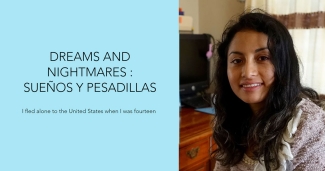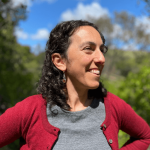Liliana Velásquez: From Unaccompanied Minor to College Freshman and Future Nurse
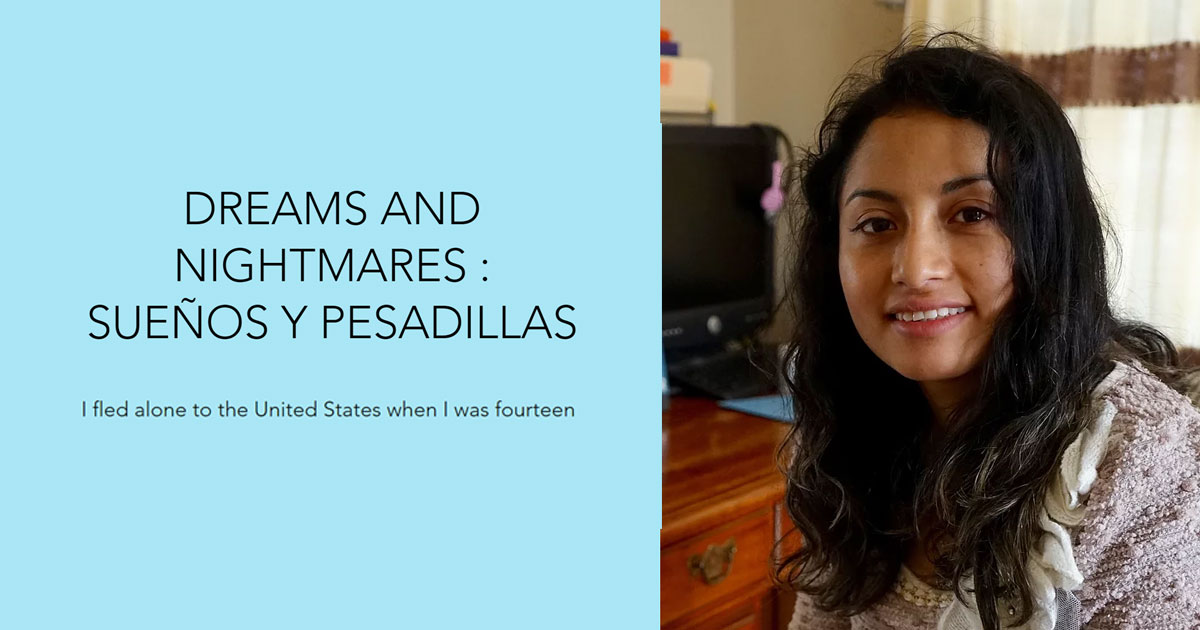
“One of the narcos pistol-whipped me on the head, because he wanted my backpack to see if there was money inside. He said, ‘We need you to turn all of your money over to us.’ Then they threw all of us out of the car, beat and kicked the men, and threw me on the ground. Finally, they left us in the mountains, outside of Tuxtla -- we didn’t know where we were.
“When the narcos went away, I cried bitterly. I said to God, Thank you, dear God, for giving me this opportunity to keep on living. I promise to conduct myself well, I promise to fight on with the sweat of my brow. At that moment, I could not believe that I was still alive.” - Liliana Velásquez, Dreams and Nightmares
This week, Liliana Velásquez, like thousands of young adults around the country, is feeling the first-day-of-school jitters. She’s beginning her first semester of studies at a community college. She wants to become a nurse, and she’s the first in her family to ever go to college -- a classic American immigrant story. But, unlike her classmates, Velásquez risked her life several times over to get into the position to be able to study. She survived a 2,000-mile trek from her village in Guatemala, through Mexico, and into the Arizona desert to escape abuse and seek better opportunities in America, like the education she now pursues.
Another thing that sets her apart from her classmates: she’s a published author. Velásquez’s first-person tale of her harrowing journey to America was recently published as a bilingual book, “Dreams and Nightmares/Sueños y Pesadillas,” available from the publisher or on Amazon. Velásquez begins her story in her small home, with seven siblings and abusive parents. To assist her parents, she awoke at 1am to begin processing corn to make the morning’s tortillas for the family. Physical and emotional abuse and attempted rape pushed her to cross the border into Mexico alone at age 14, where she encountered narcos (detailed in the excerpt above), rode atop the famed Bestia train, and ran across the border and deep into the desert, joined by other Central Americans she met along the way. Immigration officials picked her up -- but, after months in detention followed by a year of hunger with a foster family that exploited the system, she managed to gain legal status as a refugee and move in with foster parents who love her. Velásquez’s close attention to the details of her journey, and her childlike, ever-hopeful perspective -- the extra steps she took to keep the ragged clothes she wore while she crossed, and her plans to show them to her children, for example -- brightens and humanizes her troubling and violence-ridden journey.
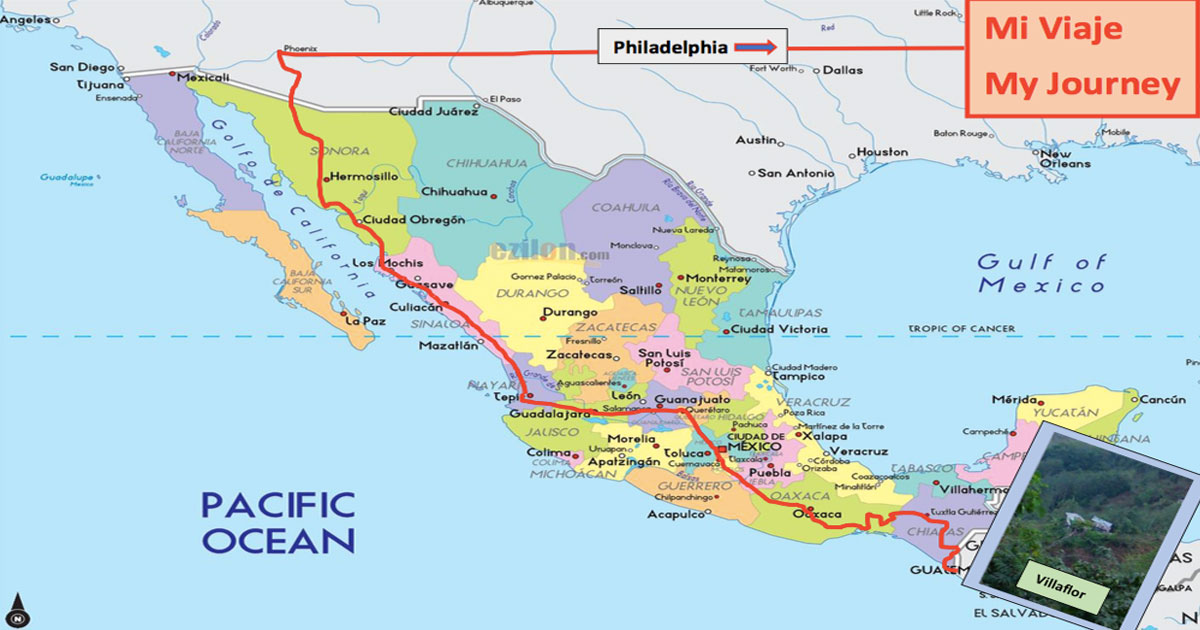
Liliana's 2,000-mile trek from Guatemala to the United States. Photo: dreamsandnightmares.org
More stories like hers are being made every day. Through May 2017, over 31,000 unaccompanied minors were apprehended at the US-Mexico border, fewer than the 38,000 that arrived in the same period in 2016, yet still representing thousands of families split apart by violence, poverty, and political instability in Central America’s “Northern Triangle” of Guatemala, Honduras, and El Salvador. Over 200,000 have come in the years since Velásquez dared to cross. Not all find the happy ending of Velásquez’s story. Hundreds of migrants die crossing the border each year. Many of those who are arrested by border authorities are eventually deported -- returning to the gang violence and dangerous home lives that they fled.
We caught up with Velásquez to hear about her life since she published the book, her desires to start a career as a nurse, and health services for refugees.
How did you decide that you wanted to become a nurse?
I think because I have such privilege. From my family, nobody has education. I am the only one. I have four brothers and four sisters -- none have an education. In my hometown, there isn’t a hospital, nothing. I want to become a nurse because I want to one day go and help people in Guatemala because so many villages and towns don’t have a hospital, they don’t have nurses or doctors. That’s my wish.
Tell me about your studies. What is your path to becoming a nurse?
I started a tech school program two years [ago]. Now, I’m going to start college next week. I’m a little nervous, but I feel like I can do it. It’s a community college. I’m not sure yet where I will go to nursing school. It’s hard, financially. I am the only one responsible for my studying so I have to pay for all of it. Maybe I can transfer after studying here at the community college. But I’m not sure yet.
After your long journey, you received mental health services through a program for newly arrived migrants, but the vast majority of people who are in your position aren’t given mental health services. What if you didn’t have it? How would it have affected the first months in America?
The first year when I was here [was the hardest]. You have so much trauma -- all your suffering is in your head, and you can’t focus on your studies. I think it affects people a lot. That happened to me when I started high school. I couldn’t focus. I was thinking about my story, and what’s happening in this world. It’s very hard to focus and concentrate on what you’re doing. But it’s very hard [for a new migrant] to find a therapist. I talked with other people and friends who had the same story as mine, and they don’t have therapists and they’re still struggling … I tried to help them find a therapist but it’s very hard because it’s expensive. I’m lucky because I had free therapy [when I first arrived], and now I have medical insurance that covers it.
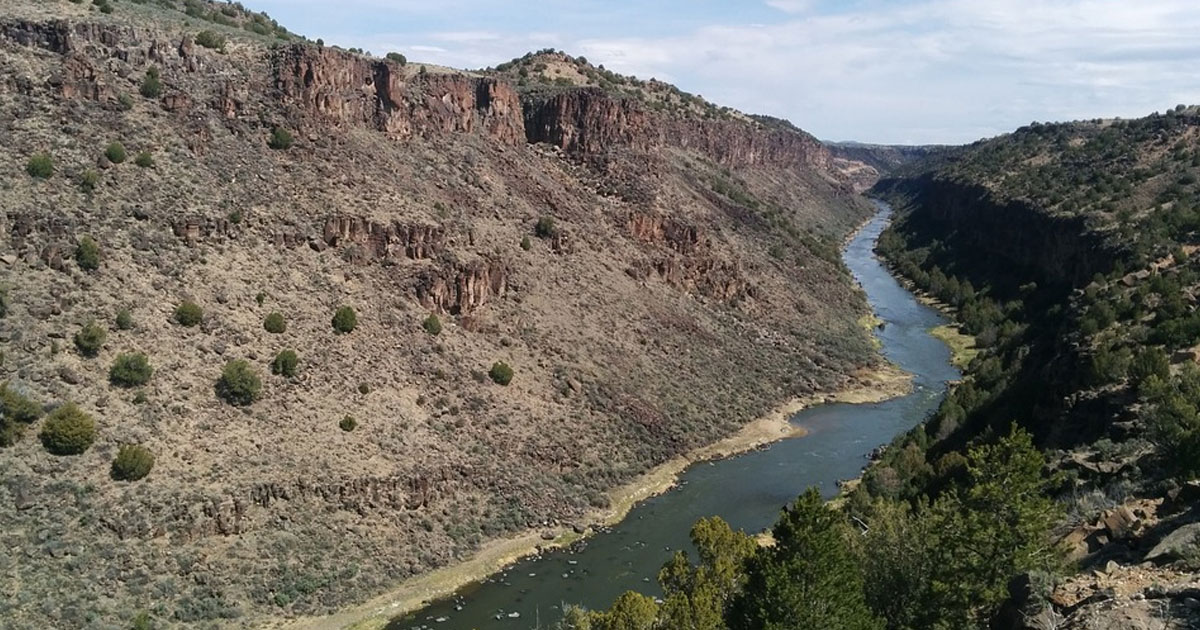
In addition to the physical abuses and trauma, migrants also face harsh landscapes, and severe health risks on their journey.
How long have you been in the US now?
Almost five years.
What do you miss about Guatemala?
I miss my family, especially. I don’t know when I’ll be able to see them again. Maybe in two or three years I can visit.
What about your brothers in North Carolina? Do you get to see them often?
Not often. I’m going to visit them this week. I went last summer, so [I visit] once a year. My brother is going to a wedding and I’m going with him. I’m not going for a long time. I’m just there for two days because I’m going to start college and I’m working and I can’t stay for a long time.
What is your schedule like, as you start college?
I am working part-time. I’m cleaning offices. I am going to study in the mornings and work in the afternoon. I have some goals -- I have to improve in my English. I’m taking ESL classes to improve.
There are so many people whose stories don’t end as well as yours. Many people don’t make it alive. And thousands of others are deported. How has the political situation and the danger of the journey affected your communities, both your hometown in Guatemala and your new home in Pennsylvania?
It’s affected so many people. So many don’t have any opportunity in Guatemala or other countries. They come here to look for opportunity, but when they’re here, they’re scared, and thinking about how they’ll be sent back to their country, and they can’t focus on what they want to do. They always live with worry. I have friends who say when they go outside, they look around to make sure that nobody’s there. It’s hard.
Our readers are primarily clinicians who serve migrants, including newly arrived immigrants. What is the most helpful thing a clinician can do?
If people can read my story and share with other people. [It’s important for people in this country to understand] the opportunity to live in this country and not to hate immigrants -- because we don’t come here just to have fun. We have a dream, we are looking for opportunities because our country doesn’t have opportunity. If people can buy my book to see the life of immigrants’ life here in the US, that would be awesome.
The book is printed in two languages in one edition -- the Spanish is on the left and the English translation is on the right. Why did you choose to publish the book in both Spanish and English?
Because a lot of people can read in Spanish who don’t speak English here. But it’s also for people who speak English. It’s my story but it’s the story of many others who have come to this country. These immigrants can read about their own life in my story. They forget about their family, their town, their country. When other people read my story, they can remember their own story.
“Dreams and Nightmares/Sueños y Pesadillas” is now available from Parlor Press or on Amazon. Visit the Dreams and Nightmares website to learn more about Velásquez’s story and access teacher’s guides to use the book as part of a curriculum. The publisher provides complimentary copies of the book to teachers and professors interested in incorporating it into their curriculum. Contact Mark Lyons, book editor, to learn more or request your copy: marklyons1242@gmail.com.
This interview was edited for clarity and brevity.
Like what you see? Amplify our collective voice with a contribution.
Got some good news to share? Send it to us via email, on Facebook, or on Twitter.
Return to the main blog page or sign up for blog updates here.
- Log in to post comments
